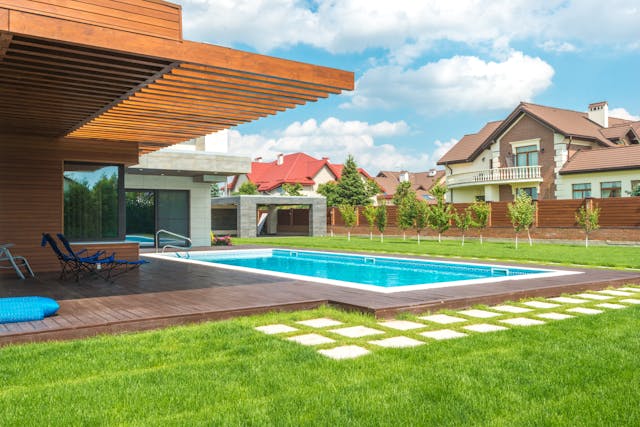Adding a pool to your backyard is a significant investment that can provide endless enjoyment, enhance property value, and transform your outdoor space into a private oasis. However, before diving into this major project, several crucial factors must be considered to ensure that the process is smooth and the result meets your expectations.
1. Purpose and Usage
First, consider why you want a pool. Is it for family recreation, fitness, entertaining guests, or simply for aesthetic appeal? Understanding the primary purpose will influence the pool’s design, size, and features. For instance, a pool for lap swimming will differ significantly from one intended for children’s play or social gatherings.
2. Budget
Establishing a budget is essential. Pool costs vary widely depending on the type (in-ground vs. above-ground), materials (concrete, fiberglass, vinyl), and additional features (heating, lighting, waterfalls). Beyond the initial installation, factor in ongoing maintenance costs, repairs, and increased utility bills. Getting multiple quotes from reputable contractors can help you get a realistic estimate and prevent unexpected expenses.
3. Space and Design
Evaluate the available space in your backyard. Measure accurately to ensure the pool fits without overwhelming the area. Consider how the pool will integrate with existing landscaping and structures. Additionally, think about design elements such as shape, depth, and surrounding hardscape. Custom designs can be tailored to fit your space and aesthetic preferences but may come at a higher cost.
4. Local Regulations and Permits
Before construction begins, research local building codes, zoning laws, and homeowners’ association (HOA) rules. Many areas require permits for pool installation, and there may be specific regulations regarding pool placement, fencing, and safety measures. Failure to comply with these regulations can result in fines and delays.
5. Safety
Safety is paramount when installing a pool. Consider features like pool covers, fences, and alarms to prevent accidents, especially if you have young children or pets. Some jurisdictions mandate safety measures, so be sure to incorporate these requirements into your planning.
6. Maintenance
Owning a pool requires regular maintenance to keep the water clean and safe. This includes routine cleaning, chemical balancing, and equipment checks. Decide whether you will handle maintenance yourself or hire a professional service. Research the time commitment and cost involved to avoid surprises later. You can buy all of the necessary maintenance equipment and chemicals to keep your pool safe from Texas Pool Supply.
7. Environmental Impact
Consider the environmental impact of your pool. Choose energy-efficient pumps and heaters, and explore options like solar covers to reduce heating costs. Water conservation measures, such as pool covers to minimize evaporation, can also be beneficial. Additionally, saltwater pools, which use salt to generate chlorine, can be an eco-friendly option compared to traditional chlorine pools.
8. Insurance
Check with your homeowner’s insurance provider about coverage for a new pool. Pools can increase liability risks, so you may need additional coverage. Understanding how a pool impacts your insurance premiums and what is covered in case of damage or accidents is crucial.
9. Resale Value
While a well-designed pool can enhance your property’s value, it’s essential to consider how it will appeal to future buyers. In some regions, pools are highly desirable; in others, they might be seen as a liability. Research local real estate trends and consult with a realtor to gauge how a pool might impact your home’s resale value.
10. Timeline
Pool installation is a complex process that can take several weeks to months, depending on the type and design. Plan the timeline carefully, considering seasonal weather conditions and any upcoming events where you might want the pool to be ready. Communicate clearly with your contractor to set realistic expectations.









